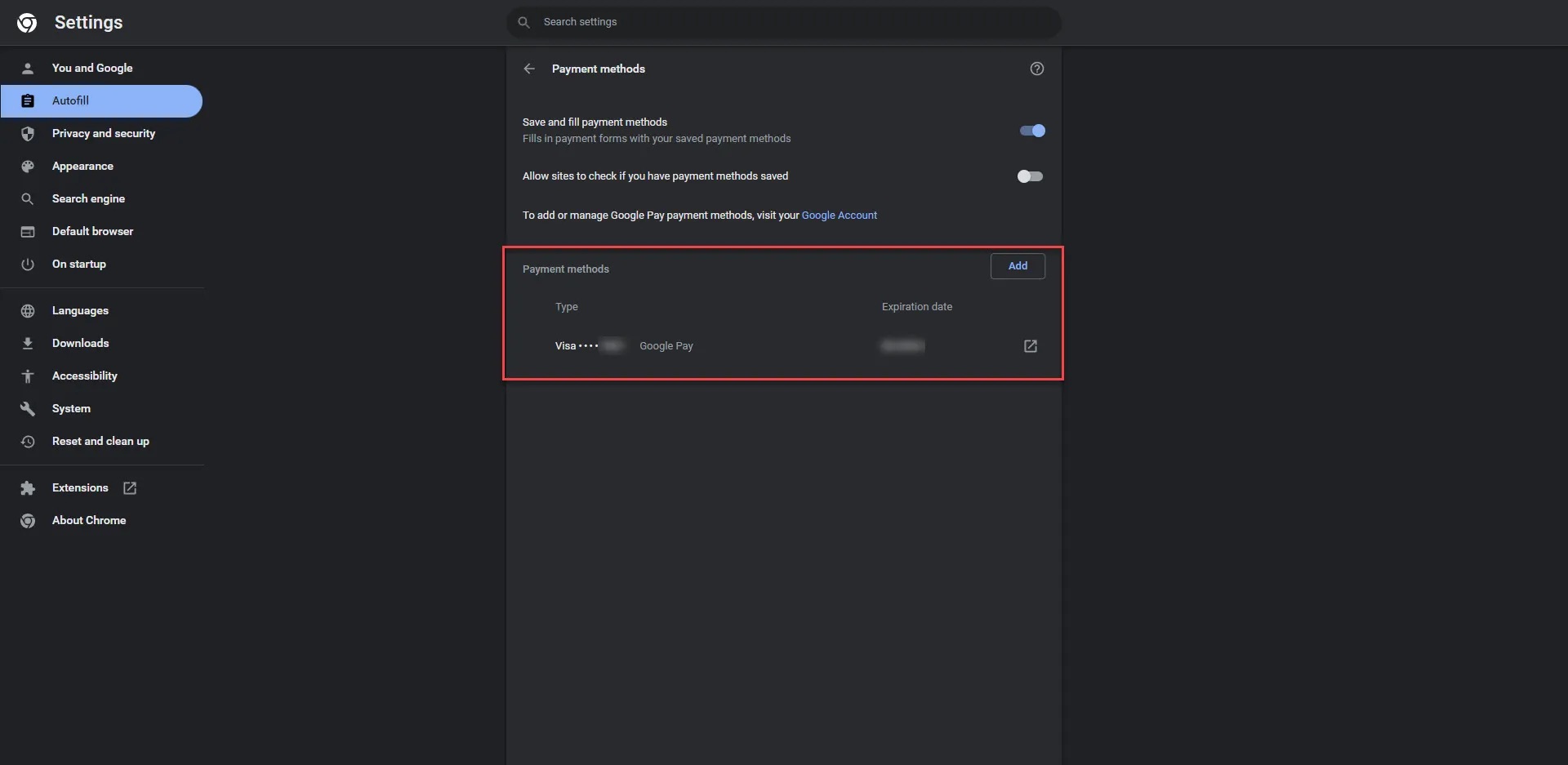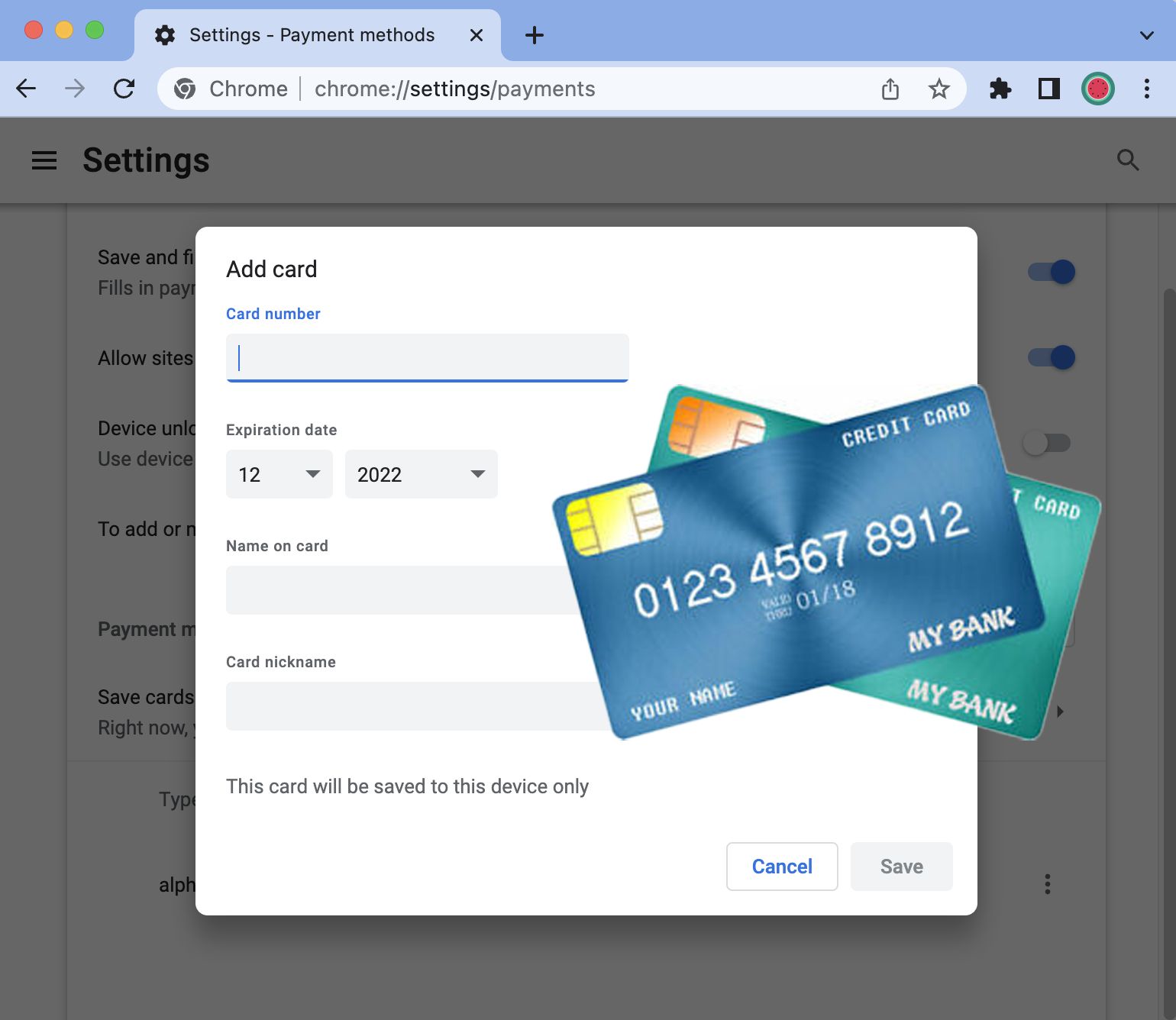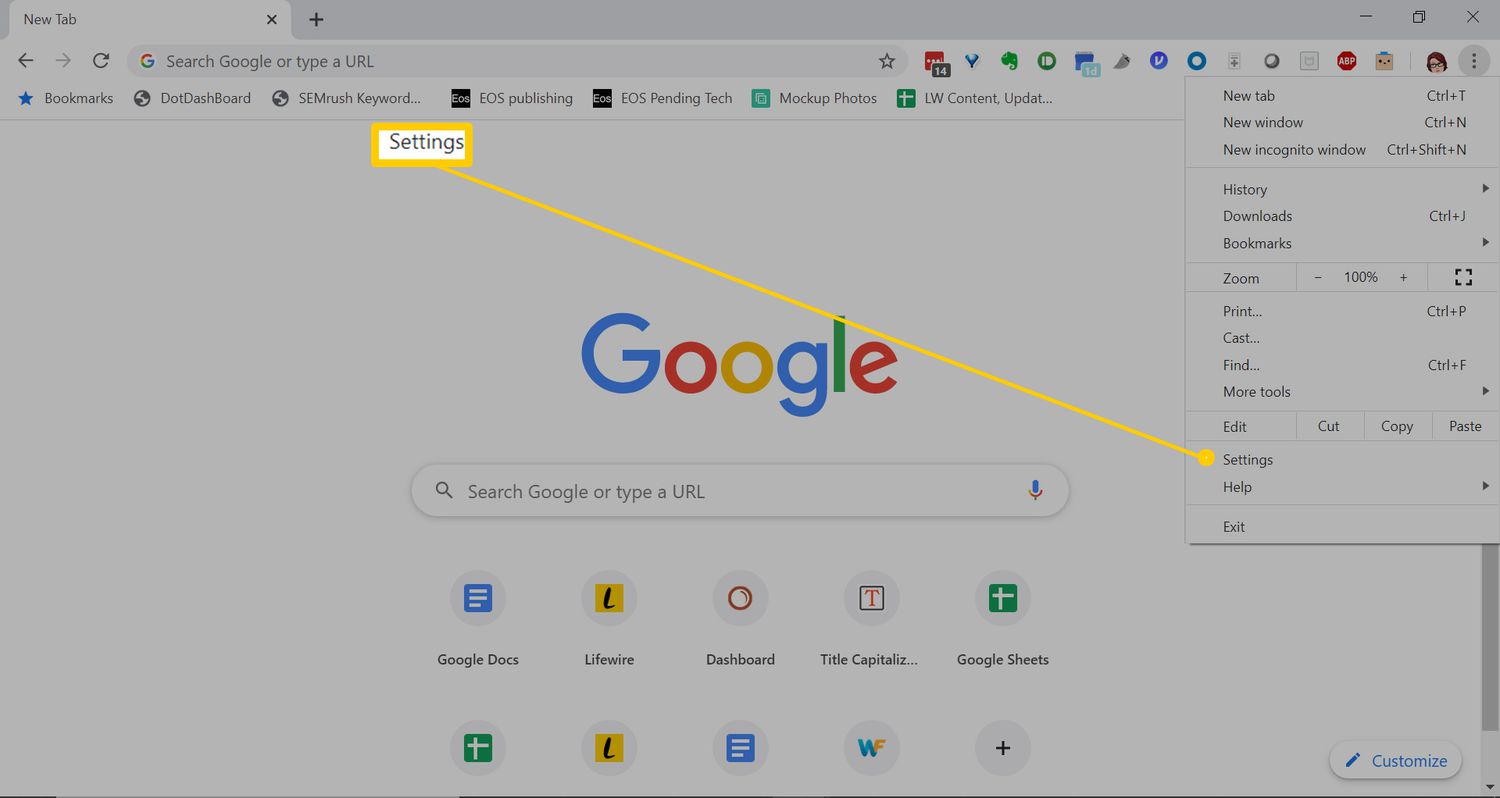Introduction
Google Chrome is one of the most popular web browsers in the world, known for its speed, simplicity, and user-friendly interface. Many users rely on Chrome not only for browsing the web but also for managing their personal information, including credit card details. With the convenience of saving credit card information for faster and easier online transactions, it's essential to understand where Google Chrome stores this sensitive data and how it ensures its security.
In this article, we will delve into the intricacies of credit card information storage within Google Chrome. We will explore how users can access and manage their saved credit card details, as well as the security measures in place to protect this sensitive data. Additionally, we will provide valuable tips for users to enhance the security of their credit card information while using Google Chrome.
Understanding where and how Google Chrome stores credit card information is crucial for users who prioritize privacy and security. By gaining insights into these aspects, users can make informed decisions about managing their sensitive financial data within the browser. Let's embark on this journey to unravel the mysteries of credit card information storage in Google Chrome and empower users with the knowledge to safeguard their digital assets.
How to Find Credit Card Information in Google Chrome
Google Chrome offers a convenient feature that allows users to securely store and manage their credit card information for online transactions. If you've saved your credit card details in Chrome and need to access or update them, the process is straightforward. Here's how you can find your credit card information in Google Chrome:
Accessing Saved Credit Card Information
-
Open Google Chrome: Launch the Chrome browser on your computer or mobile device.
-
Access Chrome Settings: Click on the three-dot menu icon located in the top-right corner of the browser window. From the dropdown menu, select "Settings."
-
Navigate to Payment Methods: In the Settings menu, scroll down and click on "Payment methods" under the "Autofill" section.
-
View Saved Credit Cards: Here, you will find a list of the credit cards you have saved in Google Chrome. Each entry includes the card's type, last four digits, and the associated billing address.
Editing or Removing Saved Credit Cards
-
Edit or Remove a Card: To edit or remove a saved credit card, click on the three-dot menu next to the card details. From the options provided, you can choose to edit the card's information or remove it from Chrome's saved payment methods.
-
Adding a New Credit Card: If you need to add a new credit card to Chrome's saved payment methods, you can do so by clicking the "Add" button and entering the relevant card details.
Syncing Across Devices
It's important to note that if you are signed in to Chrome with your Google account, your saved credit card information will be synced across all devices where you are logged in. This ensures that your payment methods are readily available whenever you use Chrome, providing a seamless and consistent user experience.
By following these simple steps, users can easily find, manage, and update their saved credit card information in Google Chrome. This accessibility and user-friendly interface make it convenient for individuals to maintain their payment methods within the browser, streamlining their online shopping and transaction experiences.
Understanding the Security of Credit Card Information in Google Chrome
When it comes to storing sensitive financial information such as credit card details, security is of paramount importance. Google Chrome employs robust security measures to safeguard users' credit card information, ensuring that it is protected from unauthorized access and potential threats. Understanding the security protocols implemented by Chrome provides users with confidence in utilizing the browser's credit card storage feature.
Encryption and Secure Storage
Google Chrome utilizes advanced encryption techniques to secure saved credit card information. When a user adds a credit card to Chrome's payment methods, the details are encrypted using industry-standard encryption algorithms. This means that the information is transformed into a secure code that can only be deciphered with the appropriate decryption key. As a result, even if unauthorized access to the stored data were to occur, the encrypted format would render the information unreadable and unusable.
Password Authentication
To further enhance security, Google Chrome requires user authentication before accessing saved credit card information. Users must authenticate themselves with their operating system or Google account password to view or modify their stored payment methods. This additional layer of protection helps prevent unauthorized individuals from gaining access to sensitive financial data within the browser.
Secure Code Verification
When users make online purchases using saved credit card information in Google Chrome, the browser employs secure code verification to authenticate the transaction. This process involves validating the user's identity and confirming the legitimacy of the transaction with the credit card issuer. By implementing secure code verification, Chrome adds an extra layer of security to prevent unauthorized usage of saved credit card details for online purchases.
Protection Against Malicious Attacks
Google Chrome continuously updates its security features to defend against potential threats and malicious attacks. The browser's built-in security mechanisms, such as sandboxing and automatic updates, help protect users' credit card information from malware, phishing attempts, and other online risks. These proactive measures contribute to a safer browsing environment, reducing the likelihood of unauthorized access to stored payment methods.
By understanding the robust security measures implemented by Google Chrome, users can have confidence in the protection of their credit card information within the browser. These security protocols demonstrate Chrome's commitment to prioritizing user privacy and data security, offering peace of mind to individuals who rely on the browser for managing their financial details.
Tips for Securing Credit Card Information in Google Chrome
Securing credit card information in Google Chrome is a critical aspect of maintaining online privacy and protecting sensitive financial data. While Chrome implements robust security measures, users can take additional steps to enhance the security of their stored credit card details. Here are valuable tips for securing credit card information in Google Chrome:
1. Enable Two-Factor Authentication
Consider enabling two-factor authentication for your Google account, which adds an extra layer of security to prevent unauthorized access. By requiring a secondary verification method, such as a code sent to your mobile device, two-factor authentication significantly reduces the risk of unauthorized individuals gaining access to your saved payment methods in Chrome.
2. Regularly Review Saved Payment Methods
Periodically review the credit cards and payment methods saved in Google Chrome. Remove any outdated or unused cards to minimize the potential impact of a security breach. By maintaining an updated list of saved payment methods, you can reduce the exposure of sensitive financial information within the browser.
3. Use Strong and Unique Passwords
Ensure that your Google account password, as well as the passwords associated with any websites where you use your saved credit card information, are strong and unique. Avoid using easily guessable passwords and consider utilizing a reputable password manager to generate and store complex passwords securely.
4. Monitor Account Activity
Regularly monitor your credit card and bank account activity for any unauthorized transactions. By staying vigilant and promptly addressing any suspicious activity, you can mitigate the impact of potential security breaches and unauthorized usage of your saved credit card details in Google Chrome.
5. Keep Chrome Updated
Frequently update Google Chrome to ensure that you have the latest security patches and enhancements. Chrome's automatic update feature helps protect against known vulnerabilities, reducing the risk of security exploits that could compromise the safety of your stored credit card information.
6. Utilize Virtual Cards for Online Transactions
Consider using virtual credit cards or digital wallets for online transactions whenever possible. Virtual cards provide an additional layer of security by generating unique card numbers for each transaction, reducing the risk of unauthorized usage or data breaches associated with your primary credit card details.
By implementing these tips, users can proactively enhance the security of their credit card information within Google Chrome. These measures complement Chrome's built-in security features, empowering individuals to take control of their online privacy and safeguard their sensitive financial data effectively.
Conclusion
In conclusion, Google Chrome provides a seamless and secure platform for users to store and manage their credit card information, offering convenience and robust security measures. By understanding where Google Chrome stores credit card information and the security protocols in place, users can make informed decisions about utilizing this feature while prioritizing the protection of their sensitive financial data.
The accessibility of credit card information within Google Chrome, coupled with the straightforward process of adding, editing, and removing saved payment methods, enhances the user experience for online transactions. The ability to sync saved credit card details across devices further contributes to a cohesive and efficient browsing and shopping experience.
Moreover, the security of credit card information in Google Chrome is fortified by advanced encryption, password authentication, and secure code verification, bolstering the protection of stored payment methods against unauthorized access and potential threats. Chrome's proactive defense against malicious attacks and its commitment to regular updates underscore its dedication to safeguarding users' financial data.
As users navigate the digital landscape, implementing additional security measures, such as enabling two-factor authentication, regularly reviewing saved payment methods, and utilizing strong and unique passwords, further fortifies the protection of credit card information within Google Chrome. These proactive steps empower users to take control of their online privacy and mitigate potential risks associated with storing sensitive financial data in the browser.
By combining the inherent security features of Google Chrome with proactive user-driven security practices, individuals can confidently leverage the convenience of saved credit card information while maintaining a vigilant stance against potential security threats.
In essence, the knowledge and insights gained from understanding the storage and security of credit card information in Google Chrome empower users to navigate the digital realm with confidence, ensuring the protection of their financial assets while embracing the convenience of online transactions. With a blend of user awareness and Chrome's robust security infrastructure, individuals can harness the full potential of the browser's credit card storage feature while prioritizing the privacy and security of their sensitive financial information.

























